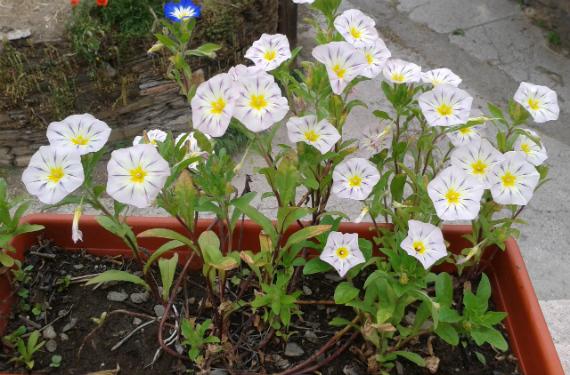
Convolvulus are a family than 200 species of plants, many of them creepers. They can be annual or perennial.
They are plants with leaves oval, generally small. The flowers have a bell or trumpet shape that open in the heat and in full sun, since in the shade or at night, the plant closes these beautiful flowers. Depending on the species, the size of the flower varies, but they are usually small that are arranged alone, although there are varieties that form clusters of flowers.
The colors are usually varied, but if we talk about the Convolvulus Tricolor or Bella by Daywe can find up to three colors at the same time. For example, the flower can be white, with a yellow and blue interior, or the blue flower with a yellow and white interior.
Another class of Convolvulus is the Blue bell or Convolvulus Sabatius. This plant has its grayish leaves with small blue flowers. This plant serves as an upholstery.
An example of a climbing Convolvulus is the Greater Correguela or Calystegia Sepium. The flowers of this are white that bloom from June to September.
They are plants that serve to cover rockeries, serving the climbers to cover the walls or gates. They are plants that look great anywhere, also in pots, since they give so many flowers that they illuminate and fill the places where they are located with color.
The irrigation should be done twice a week. Withered flowers and branches should be removed to make way for new plants that emerge when some seeds fall.
They are flowers that they can’t stand the coldso they should be covered in the winter or moved to a covered place, otherwise they will die.
Se reproduce by seeds that are planted in spring and bloom throughout the summer. They are plants of easy germination, in 10 days we will be able to see these little plants emerge.
More information – Reasons to grow climbing shrubs.

